 Search by Keyword
Sign Up Below for our MONTHLY BEATLES TRIVIA QUIZ!
|
“I’M DOWN”
(John Lennon – Paul McCartney)
 The Beatles have always been highly concerned with putting on an exciting live performance. Especially since their debut on American shores, their desire to "finish big" meant that they ended their concerts with an energetic rock 'n' roll number. Throughout 1964, and into the first half of 1965, Little Richard’s “Long Tall Sally” was almost always their choice. The Beatles have always been highly concerned with putting on an exciting live performance. Especially since their debut on American shores, their desire to "finish big" meant that they ended their concerts with an energetic rock 'n' roll number. Throughout 1964, and into the first half of 1965, Little Richard’s “Long Tall Sally” was almost always their choice.
“A lot of people were fans of Little Richard,” Paul McCartney explains in his book “Many Years From Now,” adding, “but there came a point when I wanted one of my own, so I wrote ‘I’m Down.’”
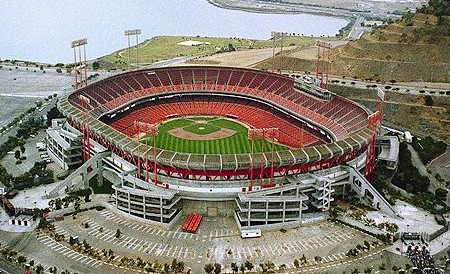 When The Beatles triumphantly returned to tour the US in August of 1965, the similarly sounding “I’m Down” replaced “Long Tall Sally” as their closing song. This remained the case throughout the rest of their touring career into late August of 1966. With only a few exceptions, such as their final show at Candlestick Park in San Francisco on August 29th, 1966, “I’m Down” was proudly displayed by the group as the final word at their concert performances. When The Beatles triumphantly returned to tour the US in August of 1965, the similarly sounding “I’m Down” replaced “Long Tall Sally” as their closing song. This remained the case throughout the rest of their touring career into late August of 1966. With only a few exceptions, such as their final show at Candlestick Park in San Francisco on August 29th, 1966, “I’m Down” was proudly displayed by the group as the final word at their concert performances.
 57 Wimpole St., London
|
Songwriting History
 “That’s Paul…with a little help from me, I think,” stated John Lennon in 1980. Paul corroborates this by saying, “I’m not sure if John had any input on it, in fact I don’t think he did. But not wishing to be churlish, with most of these I’ll always credit him with 10 per cent just in case he fixed a word or offered a suggestion. But at least 90 per cent of that would be mine.” “That’s Paul…with a little help from me, I think,” stated John Lennon in 1980. Paul corroborates this by saying, “I’m not sure if John had any input on it, in fact I don’t think he did. But not wishing to be churlish, with most of these I’ll always credit him with 10 per cent just in case he fixed a word or offered a suggestion. But at least 90 per cent of that would be mine.”
Paul wrote the song at 57 Wimpole St. in London where he lived with his current girlfriend Jane Asher and her family. Since The Beatles were back in their home territory from April through June of 1965, having completed their remote filming for the movie “Help!” by that time, the song was probably written during these months.
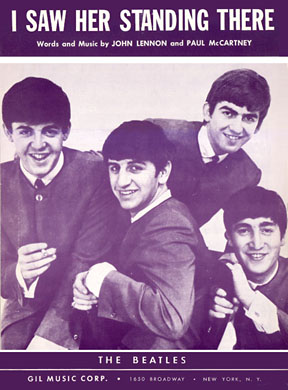 This is not to say that it was an easy song to write. In fact, they were trying to write a song like this for quite a long time. “We spent a lot of time trying to write a real corker – something like ‘Long Tall Sally,’” Paul was quoted as saying in October of 1964. He continues, “It’s very difficult. ‘I Saw Her Standing There’ was the nearest we got to it. We’re still trying to compose a Little Richard sort of song. I’d liken it to abstract painting. People think of ‘Long Tall Sally’ and say it sounds so easy to write. But it’s the most difficult thing we’ve attempted. Writing a three-chord song that’s clever is not easy.” This is not to say that it was an easy song to write. In fact, they were trying to write a song like this for quite a long time. “We spent a lot of time trying to write a real corker – something like ‘Long Tall Sally,’” Paul was quoted as saying in October of 1964. He continues, “It’s very difficult. ‘I Saw Her Standing There’ was the nearest we got to it. We’re still trying to compose a Little Richard sort of song. I’d liken it to abstract painting. People think of ‘Long Tall Sally’ and say it sounds so easy to write. But it’s the most difficult thing we’ve attempted. Writing a three-chord song that’s clever is not easy.”
 Paul elaborated even further on finally getting the song written in his 1997 book "Many Years From Now," explaining: "So ‘I’m Down’ was my rock ‘n’ roll shouter…a good stage song, and inasmuch as they are hard to write, I’m proud of it. Those kind of songs with hardly any melody, rock ‘n’ roll songs, are much harder to write than ballads, because there’s nothing to them." Paul elaborated even further on finally getting the song written in his 1997 book "Many Years From Now," explaining: "So ‘I’m Down’ was my rock ‘n’ roll shouter…a good stage song, and inasmuch as they are hard to write, I’m proud of it. Those kind of songs with hardly any melody, rock ‘n’ roll songs, are much harder to write than ballads, because there’s nothing to them."
 Paul describes his strategy in writing "I'm Down" in his 2021 book "The Lyrics": "In the course of writing that first verse, you've pretty much established everything that's going on. You just elaborate on that. Also, when you're shouting a rock and roll song, you want to be immediate; you don't want to get too fancy. Your natural rhyming pattern is trying to find the two rhymes. 'Man buys ring / Woman throws it away / Same old thing / Happens every day.' It's like a telegram. One of the great things about rock and roll and blues is that it's very economical. In the first verse you find your little rhyming pattern, and then normally you stick to that in successive verses. It's going to be a three-minute song; there's no time to be too fancy. We have to bang this out and get it said, powerfully and quickly, in two and a half or three minutes. Of course, the songs started getting a wee bit longer after that. They were up to three minutes, or maybe three minutes ten or three minutes thirty seconds." Paul describes his strategy in writing "I'm Down" in his 2021 book "The Lyrics": "In the course of writing that first verse, you've pretty much established everything that's going on. You just elaborate on that. Also, when you're shouting a rock and roll song, you want to be immediate; you don't want to get too fancy. Your natural rhyming pattern is trying to find the two rhymes. 'Man buys ring / Woman throws it away / Same old thing / Happens every day.' It's like a telegram. One of the great things about rock and roll and blues is that it's very economical. In the first verse you find your little rhyming pattern, and then normally you stick to that in successive verses. It's going to be a three-minute song; there's no time to be too fancy. We have to bang this out and get it said, powerfully and quickly, in two and a half or three minutes. Of course, the songs started getting a wee bit longer after that. They were up to three minutes, or maybe three minutes ten or three minutes thirty seconds."
Recording History
 With filming for the movie “Help!” finished, manager Brian Epstein made sure not to put too much on their agenda for about a month (mid-May to mid-June, 1965) to allow the group to “wind down” and vacation if they so desired. (Paul, for instance, went on a five-hour car trip from Lisbon to Albufeira on May 27th, 1965 which resulted in him finally finishing off the lyrics to “Yesterday.”) With filming for the movie “Help!” finished, manager Brian Epstein made sure not to put too much on their agenda for about a month (mid-May to mid-June, 1965) to allow the group to “wind down” and vacation if they so desired. (Paul, for instance, went on a five-hour car trip from Lisbon to Albufeira on May 27th, 1965 which resulted in him finally finishing off the lyrics to “Yesterday.”)
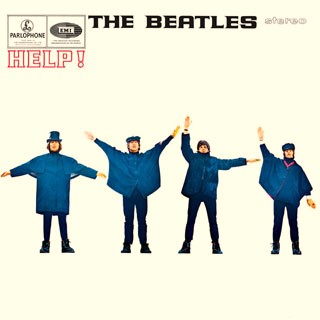 On June 14th, 1965, however, it was “back to business” with the first of three recording sessions in EMI Studio Two that were needed to complete the second side of their next British album “Help!” It turned out to be “Paul McCartney day,” since all three songs that were worked on were primarily, if not fully, written by Paul. Two sessions were scheduled on this day, the first being a three-hour session running from 2:30 to 5:30 pm that resulted in two Paul songs being begun and completed. On June 14th, 1965, however, it was “back to business” with the first of three recording sessions in EMI Studio Two that were needed to complete the second side of their next British album “Help!” It turned out to be “Paul McCartney day,” since all three songs that were worked on were primarily, if not fully, written by Paul. Two sessions were scheduled on this day, the first being a three-hour session running from 2:30 to 5:30 pm that resulted in two Paul songs being begun and completed.
 The first approximate hour-and-a-half was utilized for recording the country-flavored “I’ve Just Seen A Face” and, when that was complete, they jumped head-long into Paul’s screamer “I’m Down.” Seven takes of the rhythm track were needed until they all were satisfied with the results. These rhythm tracks consisted of Paul on bass and lead vocals, George on rhythm guitar with solo, John on organ and Ringo on drums. The first approximate hour-and-a-half was utilized for recording the country-flavored “I’ve Just Seen A Face” and, when that was complete, they jumped head-long into Paul’s screamer “I’m Down.” Seven takes of the rhythm track were needed until they all were satisfied with the results. These rhythm tracks consisted of Paul on bass and lead vocals, George on rhythm guitar with solo, John on organ and Ringo on drums.
With Paul’s encouraging Americanism “Let’s hope this one turns out pretty darn good, huh,” they jump into "take one," which shows George struggling somewhat with his guitar rhythm but having his guitar solo fairly thought through. The plan was to have John play an organ solo in the second instrumental spot but, when the time came, he just kept the rhythm going and indicated verbally for Paul to “keep going” with the song. Paul responded to the absence by shouting “oooh yeah” and “oooh-hooo,” not to mention woofing like a dog. ("Take one" can be heard in its entirety on “Anthology 2”).
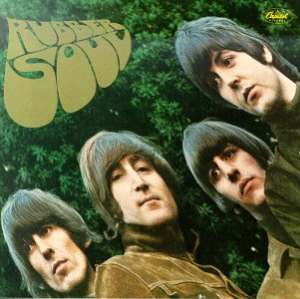 This take ended with George practicing his rhythm chords and solo, Ringo mocking Paul’s flamboyant vocal gymnastics, and an interesting genesis of a future Beatles term. “I think the title ‘Rubber Soul’ came from a comment an old blues guy had said of Jagger,” McCartney explains. He adds, “I’ve heard some out-takes of us doing ‘I’m Down’ and at the front of it I’m chatting on about Mick. I’m saying how I’d just read about an old bloke in the States who said, ‘Mick Jagger, man. Well you know they’re good – but it’s plastic soul.’ So ‘plastic soul’ was the germ of the ‘Rubber Soul’ idea.” Therefore, at the end of "take one" we hear Paul repeat “plastic soul, man, plastic soul.” This take ended with George practicing his rhythm chords and solo, Ringo mocking Paul’s flamboyant vocal gymnastics, and an interesting genesis of a future Beatles term. “I think the title ‘Rubber Soul’ came from a comment an old blues guy had said of Jagger,” McCartney explains. He adds, “I’ve heard some out-takes of us doing ‘I’m Down’ and at the front of it I’m chatting on about Mick. I’m saying how I’d just read about an old bloke in the States who said, ‘Mick Jagger, man. Well you know they’re good – but it’s plastic soul.’ So ‘plastic soul’ was the germ of the ‘Rubber Soul’ idea.” Therefore, at the end of "take one" we hear Paul repeat “plastic soul, man, plastic soul.”
 Having identified "take seven" as being the best, they were ready to add overdubs. George’s guitar solo on this take was isolated onto a separate track in order to adjust the volume or add effects during the mixing stage. In this case, however, they felt the solo could be improved, so they just had him overdub a better solo on top of the old one. There was one problem, though. Paul’s microphone picked up the original solo and it can be heard in the stereo mix of the song on the right channel. Having identified "take seven" as being the best, they were ready to add overdubs. George’s guitar solo on this take was isolated onto a separate track in order to adjust the volume or add effects during the mixing stage. In this case, however, they felt the solo could be improved, so they just had him overdub a better solo on top of the old one. There was one problem, though. Paul’s microphone picked up the original solo and it can be heard in the stereo mix of the song on the right channel.
 Other overdubs included John’s flamboyant organ solo on a 1964 Vox Continental, complete with the clicking of the keys during his Jerry Lee Lewis-like glissandos in the seventh and eighth measures. Even though the solo was performed later as an overdub, this doesn’t stop Paul from exclaiming in the rhythm track “tear it up, John”. Ringo then added some enthusiastic bongo playing during the first and second verses as well as the during the song's conclusion. Other overdubs included John’s flamboyant organ solo on a 1964 Vox Continental, complete with the clicking of the keys during his Jerry Lee Lewis-like glissandos in the seventh and eighth measures. Even though the solo was performed later as an overdub, this doesn’t stop Paul from exclaiming in the rhythm track “tear it up, John”. Ringo then added some enthusiastic bongo playing during the first and second verses as well as the during the song's conclusion.
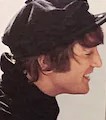 Interestingly, two different sets of background vocals were recorded as overdubs on “I’m Down.” The most discernible are the answering harmonies from John and George during the fifth-through-tenth measures of each verse, namely with the lyrics “I’m really down, down on the ground,” as well as the accented words “how can you laugh” that are sung in the thirteenth measure. These identical vocals are also repeated throughout the conclusion as the song fades away. Interestingly, two different sets of background vocals were recorded as overdubs on “I’m Down.” The most discernible are the answering harmonies from John and George during the fifth-through-tenth measures of each verse, namely with the lyrics “I’m really down, down on the ground,” as well as the accented words “how can you laugh” that are sung in the thirteenth measure. These identical vocals are also repeated throughout the conclusion as the song fades away.
 The second set of overdubbed background vocals, which can be heard very clearly when the stereo mix of the song is played out-of-phase, encompass John singing the word “down” in bass notes followed immediately by George and Paul harmonizing the same word in a slightly higher register. These are always performed at the same time as the first set of background vocals which adds a vocal depth that compensates for the absence of a second guitar in the song. All in all, within about an hour-and-a half (4 to 5:30 pm), it appears obvious that The Beatles had a “pretty darn good” time recording this song. The second set of overdubbed background vocals, which can be heard very clearly when the stereo mix of the song is played out-of-phase, encompass John singing the word “down” in bass notes followed immediately by George and Paul harmonizing the same word in a slightly higher register. These are always performed at the same time as the first set of background vocals which adds a vocal depth that compensates for the absence of a second guitar in the song. All in all, within about an hour-and-a half (4 to 5:30 pm), it appears obvious that The Beatles had a “pretty darn good” time recording this song.
 An interesting side note is that, after a 90 minute break to let Paul’s shredded vocal chords heal, he returned to the studio to record the classic, tender ballad “Yesterday.” An interesting side note is that, after a 90 minute break to let Paul’s shredded vocal chords heal, he returned to the studio to record the classic, tender ballad “Yesterday.”
Both the mono and stereo mixes of “I’m Down” were made on June 18th, 1965 in the control room of EMI Studio Two by producer George Martin and engineers Norman Smith and Phil McDonald. Usually, stereo mixes were not initially made of songs that were intended only for singles, since they were only pressed in mono at that time. The fact that a stereo mix was made on this day indicates that the decision to place “I’m Down” as the b-side of the single “Help!,” and not on the resulting album, was not made this early on. In fact, this stereo mix didn’t surface in Britain or American until the mid '70s.
 Two further recordings of “I’m Down” were made during their second American tour. On August 29th and 30th of 1965, The Beatles performed at the Hollywood Bowl in Los Angeles, California, both shows fully recorded for an intended live album. The first show was produced by Karl Engemann and engineered by Hugh Davies, while the second show was produced by Capitol vice-president Voyle Gilmore and engineered by Pete Abbott. Unfortunately, neither of these recorded versions made it on to the official Beatles Hollywood Bowl releases, these recordings remaining in the vaults to this day. Two further recordings of “I’m Down” were made during their second American tour. On August 29th and 30th of 1965, The Beatles performed at the Hollywood Bowl in Los Angeles, California, both shows fully recorded for an intended live album. The first show was produced by Karl Engemann and engineered by Hugh Davies, while the second show was produced by Capitol vice-president Voyle Gilmore and engineered by Pete Abbott. Unfortunately, neither of these recorded versions made it on to the official Beatles Hollywood Bowl releases, these recordings remaining in the vaults to this day.
 One final Beatles recording session concerning this song occurred on January 5th, 1966 at CTS Studios in London. In preparation for the television special “The Beatles At Shea Stadium,” the group was called in to “sweeten” some of the audio tracks. This resulted in Paul overdubbing a better bass track to “I’m Down,” as well as John adding a more discernible and cleaner organ part. One final Beatles recording session concerning this song occurred on January 5th, 1966 at CTS Studios in London. In preparation for the television special “The Beatles At Shea Stadium,” the group was called in to “sweeten” some of the audio tracks. This resulted in Paul overdubbing a better bass track to “I’m Down,” as well as John adding a more discernible and cleaner organ part.
Song Structure and Style
 “It’s really a blues song,” McCartney explained in 1994. While it does have a standard 12-bar-blues feel and chord pattern, there is, as is usual for The Beatles, more than meets the eye. Always being ones to add nuances to make their recordings unique, the boys played with the arrangement until it grew to fourteen measures per verse with many “beatles breaks” thrown in for good measure. It may have been originally patterned after Little Richard, but the end result is pure Beatles. “It’s really a blues song,” McCartney explained in 1994. While it does have a standard 12-bar-blues feel and chord pattern, there is, as is usual for The Beatles, more than meets the eye. Always being ones to add nuances to make their recordings unique, the boys played with the arrangement until it grew to fourteen measures per verse with many “beatles breaks” thrown in for good measure. It may have been originally patterned after Little Richard, but the end result is pure Beatles.
While “Long Tall Sally,” for instance, stays strictly to an identical pattern for all the verses, whether vocal or instrumental, “I’m Down” changes things up by showing a subtle-but-noticeable difference between the verses and solo sections of the song. These differences can best be described in the format of ‘verse/ verse/ solo 1/ verse/ solo 2/ outro’ (or aabacd).
 The first fourteen-measure verse starts in a very startling manner with Paul’s solo vocal. He sings a cappella for the entire first two measures (“you tell lies thinking I can’t see”) leaving the listener somewhat disoriented about the time signature and key. It’s not until the third measure, with the group's accent on the downbeat, that we can tell where the measure begins and that the song is in the key of G major. The first fourteen-measure verse starts in a very startling manner with Paul’s solo vocal. He sings a cappella for the entire first two measures (“you tell lies thinking I can’t see”) leaving the listener somewhat disoriented about the time signature and key. It’s not until the third measure, with the group's accent on the downbeat, that we can tell where the measure begins and that the song is in the key of G major.
 In the fourth measure, Ringo kicks in an energetic drum fill to invite the band, as well as himself on overdubbed bongos, in on the fifth through tenth measures. These six measures actually feature six overdubbed voices, two of Paul, John and George, which focus primarily on the title of the song. The eleventh measure mostly comprises an accented band fill switching from D major to G major that highlights the phrase “how can you laugh,” which is sung by Paul alone. This is followed by the twelfth measure which comprises another "break" that allows Paul to finish the phrase a cappella, namely “when you know I’m down.” The final two measures repeat this same pattern, only it’s John and George who sing “how can you laugh” this time around. The verse ends with a small drum fill from Ringo which ushers in the next verse. With two breaks at the beginning of the verse and two breaks at the end, a uniformity, or bookend effect, is purposely created. In the fourth measure, Ringo kicks in an energetic drum fill to invite the band, as well as himself on overdubbed bongos, in on the fifth through tenth measures. These six measures actually feature six overdubbed voices, two of Paul, John and George, which focus primarily on the title of the song. The eleventh measure mostly comprises an accented band fill switching from D major to G major that highlights the phrase “how can you laugh,” which is sung by Paul alone. This is followed by the twelfth measure which comprises another "break" that allows Paul to finish the phrase a cappella, namely “when you know I’m down.” The final two measures repeat this same pattern, only it’s John and George who sing “how can you laugh” this time around. The verse ends with a small drum fill from Ringo which ushers in the next verse. With two breaks at the beginning of the verse and two breaks at the end, a uniformity, or bookend effect, is purposely created.
 After a structurally identical second verse (minus the final drum fill), the first solo section of the song occurs, which is the first time an actual 12-bar blues format is heard in the song. The two accented breaks of this section mimics the first two verses, but from the fifth measure on we hear the established structure of most blues and early rock-and-roll songs. In fact, we could hear this guitar solo as interchangeable with the ones we hear in The Beatles version of its precursor “Long Tall Sally.” After a structurally identical second verse (minus the final drum fill), the first solo section of the song occurs, which is the first time an actual 12-bar blues format is heard in the song. The two accented breaks of this section mimics the first two verses, but from the fifth measure on we hear the established structure of most blues and early rock-and-roll songs. In fact, we could hear this guitar solo as interchangeable with the ones we hear in The Beatles version of its precursor “Long Tall Sally.”
 The third verse then appears, which is also identical to the first two, except for the absence of bongos and for two effective building notes from George at the end of the second measure after Paul’s lyrics “nobody else.” This transistions nicely into the second solo section of the song, this one performed by John on organ. The difference between this and the first solo section is that the beginning accents are gone, resulting in a very standard 12-bar blues format. Paul’s laughs and mostly unintelligible screams add much to the flamboyant atmosphere of this solo. The third verse then appears, which is also identical to the first two, except for the absence of bongos and for two effective building notes from George at the end of the second measure after Paul’s lyrics “nobody else.” This transistions nicely into the second solo section of the song, this one performed by John on organ. The difference between this and the first solo section is that the beginning accents are gone, resulting in a very standard 12-bar blues format. Paul’s laughs and mostly unintelligible screams add much to the flamboyant atmosphere of this solo.
 The conclusion (or “outro”) to the song is then heard, which is actually a three-times repeated 12-bar blues pattern consisting primarily of the repeat of the song’s title. Ringo’s bongos reappear for this section since they had taken a hiatus since the second verse, but now they are higher in the mix and therefore more noticeable. All six voices create possibly the highest energy heard in any Beatles track up to this time, complete with Paul’s blood-curdling screams of “I’m down” and “baby, baby, baby.” As it fades away, the song actually leaves you breathless and wanting to put another dime in the jukebox to hear it again (if you can remember back to those days)! The conclusion (or “outro”) to the song is then heard, which is actually a three-times repeated 12-bar blues pattern consisting primarily of the repeat of the song’s title. Ringo’s bongos reappear for this section since they had taken a hiatus since the second verse, but now they are higher in the mix and therefore more noticeable. All six voices create possibly the highest energy heard in any Beatles track up to this time, complete with Paul’s blood-curdling screams of “I’m down” and “baby, baby, baby.” As it fades away, the song actually leaves you breathless and wanting to put another dime in the jukebox to hear it again (if you can remember back to those days)!
 While Paul tended to dominate the proceedings in the recording studio in February of 1965 (playing bass, lead guitar and piano at times), he appropriately allowed this recording to be a full band performance, probably knowing that it was destined to be a concert staple shortly thereafter. He restricted himself to bass guitar, which ended up being rather low in the mix and simply played in order to concentrate on his enthusiastic vocal delivery. While Paul tended to dominate the proceedings in the recording studio in February of 1965 (playing bass, lead guitar and piano at times), he appropriately allowed this recording to be a full band performance, probably knowing that it was destined to be a concert staple shortly thereafter. He restricted himself to bass guitar, which ended up being rather low in the mix and simply played in order to concentrate on his enthusiastic vocal delivery.
Paul explains his vocal delivery for the song: I could do Little Richard’s voice, which is a wild, hoarse, screaming thing, it’s like an out-of-body experience. You have to leave your current sensibilities and go about a foot above your head to sing it. You have to actually go outside yourself. It’s a funny little trick and when you find it, it’s very interesting." In his book "The Lyrics," Paul explains, "John had asked me...how I did that Little Richard thing. I said, 'It just comes out the top of my head'...I've never really thought much about my voice. I've been lucky enough not to have to. People say to me, 'Do you use your head voice or your chest voice?' I say, 'I'm afraid I don't know the difference.' I haven't analyzed it."
 Little Richard himself remembers Paul’s fascination with his vocal style when he shared the bill with The Beatles at The Tower Ballroom in Liverpool on October 12th, 1962. “Paul especially was into my music and had been playing it since he was in high school. He was impressed with my hollerin’ and when I was on stage in Liverpool, and later in Hamburg (the following month), he used to stay in the wings and watch me sing…People know that if they sing one of my songs on stage, they’re gonna light up the house.” Little Richard himself remembers Paul’s fascination with his vocal style when he shared the bill with The Beatles at The Tower Ballroom in Liverpool on October 12th, 1962. “Paul especially was into my music and had been playing it since he was in high school. He was impressed with my hollerin’ and when I was on stage in Liverpool, and later in Hamburg (the following month), he used to stay in the wings and watch me sing…People know that if they sing one of my songs on stage, they’re gonna light up the house.”
 Actually, all four Beatles are on top of their game on “I’m Down.” John’s electrifying organ work, while rudimentary, exemplifies Jerry Lee Lewis to the best of his ability and succeeds in creating the necessary atmosphere. His backing vocals, especially his lower-register bass notes, show he was very much interested in creating the perfect "screamer" for their repertoire. Actually, all four Beatles are on top of their game on “I’m Down.” John’s electrifying organ work, while rudimentary, exemplifies Jerry Lee Lewis to the best of his ability and succeeds in creating the necessary atmosphere. His backing vocals, especially his lower-register bass notes, show he was very much interested in creating the perfect "screamer" for their repertoire.
 After much practice, George’s guitar solo is very fitting and confidently played, as is his rhythm work throughout the song. His sense of pitch is also nicely displayed in his two background vocal parts. Ringo reprises his bongo playing expertise once again, as heard four months earlier in “You’re Going To Lose That Girl,” but his strong suit is his spirited performance at the drum kit. Especially after seven takes, he plays as if he’s back at the Cavern Club in 1962. After much practice, George’s guitar solo is very fitting and confidently played, as is his rhythm work throughout the song. His sense of pitch is also nicely displayed in his two background vocal parts. Ringo reprises his bongo playing expertise once again, as heard four months earlier in “You’re Going To Lose That Girl,” but his strong suit is his spirited performance at the drum kit. Especially after seven takes, he plays as if he’s back at the Cavern Club in 1962.
 As a possible extension of John’s lyrics in the recently recorded track “Help!,” Paul’s lyrics in “I’m Down” loosely convey the depressed state of someone whose girl treats him disrespectfully. “How can you laugh, when you know I’m down?” he asks. However, the sad lyrics are obviously not meant to create sympathy but used as a vehicle to deliver a “rock ‘n’ roll shouter,” as Paul called it. This is evidenced by humorous lyrics like “we’re all alone and there’s nobody else, you still moan ‘keep your hands to yourself.’” Even the line about the woman throwing away the man’s ring (which apparently actually happened to Paul during his courtship with Heather Mills) comes across as humorous in this setting. As a possible extension of John’s lyrics in the recently recorded track “Help!,” Paul’s lyrics in “I’m Down” loosely convey the depressed state of someone whose girl treats him disrespectfully. “How can you laugh, when you know I’m down?” he asks. However, the sad lyrics are obviously not meant to create sympathy but used as a vehicle to deliver a “rock ‘n’ roll shouter,” as Paul called it. This is evidenced by humorous lyrics like “we’re all alone and there’s nobody else, you still moan ‘keep your hands to yourself.’” Even the line about the woman throwing away the man’s ring (which apparently actually happened to Paul during his courtship with Heather Mills) comes across as humorous in this setting.
In actuality, analyzing the lyrics of “I’m Down” could be compared to trying to analyze the lyrics of “Tutti Frutti.” Some lyrics just weren’t meant to be analyzed.
American Releases
 The Beatles were very anxious to release “I’m Down” to the public, so it was elected to be the b-side to their newest single “Help!,” which was released in the US on July 19th, 1965. While the a-side obviously hit the top of the charts, the b-side couldn’t quite make it into Billboard Hot 100, peaking embarrassingly at #101. As good of a song as it may have been, all attention was rightfully aimed at the title song of their new motion picture. Therefore, “I’m Down” became known somewhat as a hidden treasure. The Beatles were very anxious to release “I’m Down” to the public, so it was elected to be the b-side to their newest single “Help!,” which was released in the US on July 19th, 1965. While the a-side obviously hit the top of the charts, the b-side couldn’t quite make it into Billboard Hot 100, peaking embarrassingly at #101. As good of a song as it may have been, all attention was rightfully aimed at the title song of their new motion picture. Therefore, “I’m Down” became known somewhat as a hidden treasure.
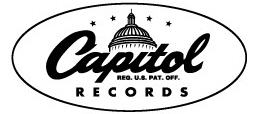 While the majority of British b-sides were not included on British albums at that time, this was not the case in America. In their efforts to create as many albums as possible for the US market, Capitol Records would scarf up the b-sides of singles as new album tracks. Somehow they overlooked this one. While the majority of British b-sides were not included on British albums at that time, this was not the case in America. In their efforts to create as many albums as possible for the US market, Capitol Records would scarf up the b-sides of singles as new album tracks. Somehow they overlooked this one.
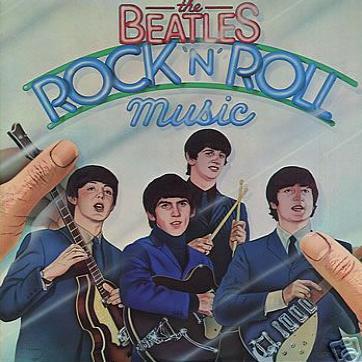 June 7th, 1976 was the first time the song was included on an album, as well as the first time the stereo mix of the song was heard anywhere other than a Japanese EP from December of 1965. This EP featured the stereo mix that was originally made shortly after the song was recorded due to a consideration of it being included on the British "Help!" album, which it was not. “Rock ‘n’ Roll Music” was a double-album compilation that featured the harder-edged songs in their catalog, “I’m Down” being an obvious contender. George Martin was consulted regarding the preparation of this album and decided it was necessary to reverse the right and left channels of the original stereo mix of this song for this album. On October 27th, 1980, the set was divided into two volumes and re-released for budget sales. “Rock ‘n’ Roll Music, Volume 2” included the song. June 7th, 1976 was the first time the song was included on an album, as well as the first time the stereo mix of the song was heard anywhere other than a Japanese EP from December of 1965. This EP featured the stereo mix that was originally made shortly after the song was recorded due to a consideration of it being included on the British "Help!" album, which it was not. “Rock ‘n’ Roll Music” was a double-album compilation that featured the harder-edged songs in their catalog, “I’m Down” being an obvious contender. George Martin was consulted regarding the preparation of this album and decided it was necessary to reverse the right and left channels of the original stereo mix of this song for this album. On October 27th, 1980, the set was divided into two volumes and re-released for budget sales. “Rock ‘n’ Roll Music, Volume 2” included the song.
 Because of EMI's decision to release a box set that included all of the British Beatles albums as well as an additional album entitled "Rarities" that included songs that did not appear on any British Beatles album, Capitol had initially decided to release this album in America. 2,000 promotional copies of this album were manufactured (#SPRO-8969) and then another unlimited number of advance copies (ESN-SN-12009) were printed in the fall of 1979. "I'm Down" was included on this proposed album which was decided to be abondoned due to the fact that this and most of the songs contained therein were available on other Beatles albums in the US at the time. These promotional albums are very collectible today. Because of EMI's decision to release a box set that included all of the British Beatles albums as well as an additional album entitled "Rarities" that included songs that did not appear on any British Beatles album, Capitol had initially decided to release this album in America. 2,000 promotional copies of this album were manufactured (#SPRO-8969) and then another unlimited number of advance copies (ESN-SN-12009) were printed in the fall of 1979. "I'm Down" was included on this proposed album which was decided to be abondoned due to the fact that this and most of the songs contained therein were available on other Beatles albums in the US at the time. These promotional albums are very collectible today.
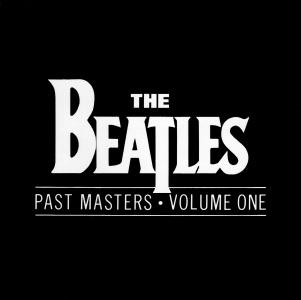 On March 7th, 1988, the stereo version of this song was preserved forever into the compact disc era on the album “Past Masters, Volume One.” This track served a suitable and effective purpose as the concluding song of this collection. This album was then combined with its companion "Past Masters, Volume Two" into one double-album vinyl release on October 24th, 1988. On March 7th, 1988, the stereo version of this song was preserved forever into the compact disc era on the album “Past Masters, Volume One.” This track served a suitable and effective purpose as the concluding song of this collection. This album was then combined with its companion "Past Masters, Volume Two" into one double-album vinyl release on October 24th, 1988.
 Even though the compact disc format had taken hold, jukeboxes across the nation still played 45s. This dilemma was rectified by Capitol instituting their Cema series of “For Jukeboxes Only!” singles, which were mostly printed on white vinyl. The “Help!” single, which was released in March of 1992, appeared on white vinyl with “I’m Down” still on the b-side. Even though the compact disc format had taken hold, jukeboxes across the nation still played 45s. This dilemma was rectified by Capitol instituting their Cema series of “For Jukeboxes Only!” singles, which were mostly printed on white vinyl. The “Help!” single, which was released in March of 1992, appeared on white vinyl with “I’m Down” still on the b-side.
 The highly anticipated “Anthology 2” was released on March 19th, 1996 and included 'take one' of “I’m Down,” which included Paul’s comment “plastic soul” at the end. While the original running order of the songs on the first disc placed it chronologically as the sixth track, Paul McCartney specified that “I’m Down” should be placed as the third track instead. Therefore, the running order was changed and remains that way to this day. The highly anticipated “Anthology 2” was released on March 19th, 1996 and included 'take one' of “I’m Down,” which included Paul’s comment “plastic soul” at the end. While the original running order of the songs on the first disc placed it chronologically as the sixth track, Paul McCartney specified that “I’m Down” should be placed as the third track instead. Therefore, the running order was changed and remains that way to this day.
 In preparation for this release, a sampler disc was released on March 14th, 1996 in both the CD and vinyl format for radio stations. Only the vinyl version contains the version of “I’m Down” that is included on the “Anthology 2” album. 3,500 copies of this vinyl release were made, although some sources indicate much less. Either way, this is a hard-to-find album. In preparation for this release, a sampler disc was released on March 14th, 1996 in both the CD and vinyl format for radio stations. Only the vinyl version contains the version of “I’m Down” that is included on the “Anthology 2” album. 3,500 copies of this vinyl release were made, although some sources indicate much less. Either way, this is a hard-to-find album.
 Three additional releases of the song were made available on September 9th, 2009. Both volumes of “Past Masters” were remastered and combined into a 2-CD set entitled simply “Past Masters” (a remastered vinyl double-album version coming out on November 12th, 2012). And, if you want to hear the original mono mix as heard on the 1965 single, the box set “The Beatles In Mono” includes their entire catalog in remastered mono, including the 2-CD set “Mono Masters,” which features “I’m Down." Three additional releases of the song were made available on September 9th, 2009. Both volumes of “Past Masters” were remastered and combined into a 2-CD set entitled simply “Past Masters” (a remastered vinyl double-album version coming out on November 12th, 2012). And, if you want to hear the original mono mix as heard on the 1965 single, the box set “The Beatles In Mono” includes their entire catalog in remastered mono, including the 2-CD set “Mono Masters,” which features “I’m Down."
Also released on September 9th, 2009, in promotion of the remastered Beatles catalog, the "09.09.09 Sampler" was distributed to retailers and radio programmers, "I'm Down" being featured therein. This has become quite the find for collectors.
 On July 24th, 2012, the iTunes Store, in partnership with EMI Records, released a Beatles compilation album entitled "Tomorrow Never Knows," the purpose of which was to highlight the group's influence on the history of rock music. The album had the approval of Paul and Ringo, as well as the board of directors for the estates of John and George, and was successful enough to peak at #24 on the Billboard album chart. "I'm Down" easily made the grade for this release. On July 24th, 2012, the iTunes Store, in partnership with EMI Records, released a Beatles compilation album entitled "Tomorrow Never Knows," the purpose of which was to highlight the group's influence on the history of rock music. The album had the approval of Paul and Ringo, as well as the board of directors for the estates of John and George, and was successful enough to peak at #24 on the Billboard album chart. "I'm Down" easily made the grade for this release.
On November 27th, 2001, a double-album entitled "The Concert For New York City" was released, "I'm Down" included as performed by Paul at this benefit concert in response to the September 11th attacks that year.
 On November 17th, 2009, Paul McCartney released a two-CD, one-DVD set entitled “Good Evening New York City.” This set was recorded live during the three-night inaugural concert at New York City’s “Citi Field” on July 17th, 18th and 21st, 2009. These were the first concerts held at this stadium, which sits adjacent to the site of the recently demolished Shea Stadium where The Beatles held their historic show in 1965. Appropriately, McCartney thought to recreate the original event by resurrecting the Shea Stadium closing song, “I’m Down.” The song is featured on the second CD as well as the DVD in this three-disc set. On November 17th, 2009, Paul McCartney released a two-CD, one-DVD set entitled “Good Evening New York City.” This set was recorded live during the three-night inaugural concert at New York City’s “Citi Field” on July 17th, 18th and 21st, 2009. These were the first concerts held at this stadium, which sits adjacent to the site of the recently demolished Shea Stadium where The Beatles held their historic show in 1965. Appropriately, McCartney thought to recreate the original event by resurrecting the Shea Stadium closing song, “I’m Down.” The song is featured on the second CD as well as the DVD in this three-disc set.
Live Performances
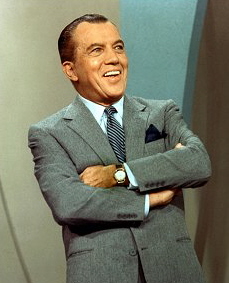 The Beatles wasted no time in premiering this intended stage song to their audiences. Nine days after the single was released in Britain, they included the song in their appearance on the live British TV show “Blackpool Night Out” on August 1st, 1965. Then, exactly two weeks later on August 14th, 1965, “I’m Down” was among the songs they taped for their final appearance on the Ed Sullivan Show, which was shown on September 12th of that year. The Beatles wasted no time in premiering this intended stage song to their audiences. Nine days after the single was released in Britain, they included the song in their appearance on the live British TV show “Blackpool Night Out” on August 1st, 1965. Then, exactly two weeks later on August 14th, 1965, “I’m Down” was among the songs they taped for their final appearance on the Ed Sullivan Show, which was shown on September 12th of that year.
 The day after this taping they began their second American tour at Shea Stadium in New York City on August 15th, 1965. At this legendary show, they ended their twelve-song set with “I’m Down,” as they did for the rest of this summer tour. After hitting many hot spots in the country, including Atlanta, Houston, Chicago, Minneapolis and Los Angeles (at the Hollywood Bowl), they ended the tour on August 31st, 1965 at the Cow Palace in San Francisco. The day after this taping they began their second American tour at Shea Stadium in New York City on August 15th, 1965. At this legendary show, they ended their twelve-song set with “I’m Down,” as they did for the rest of this summer tour. After hitting many hot spots in the country, including Atlanta, Houston, Chicago, Minneapolis and Los Angeles (at the Hollywood Bowl), they ended the tour on August 31st, 1965 at the Cow Palace in San Francisco.
 Their last tour in their homeland, which stretched from December 3rd through 12th, 1965, also included the song. This British tour played in London, Glasgow, Manchester, Yorkshire, Birmingham and Cardiff, and included their very last Liverpool concert at the Empire Theatre on December 5th of that year. Their last tour in their homeland, which stretched from December 3rd through 12th, 1965, also included the song. This British tour played in London, Glasgow, Manchester, Yorkshire, Birmingham and Cardiff, and included their very last Liverpool concert at the Empire Theatre on December 5th of that year.
 1966 saw them continue to feature the song in their performances, beginning with their May 1st appearance at the New Musical Express Annual Poll-Winners’ All-Star Concert at the Empire Pool in Wembley. Then their international tour of the year began on June 24th in Munich, West Germany and included their infamous shows in Japan and The Philippines, which ended the tour on July 4th of that year. Their eleven-song set still included “I’m Down” as the final number. 1966 saw them continue to feature the song in their performances, beginning with their May 1st appearance at the New Musical Express Annual Poll-Winners’ All-Star Concert at the Empire Pool in Wembley. Then their international tour of the year began on June 24th in Munich, West Germany and included their infamous shows in Japan and The Philippines, which ended the tour on July 4th of that year. Their eleven-song set still included “I’m Down” as the final number.
 Their final American tour began shortly afterward on August 12th, 1966, at Chicago's International Ampitheratre. They continued using the same set list they used for the international tour but, on occasion, they replaced “I’m Down” with their original show-closer “Long Tall Sally” (such as on their last show at Candlestick Park in San Francisco). Their final American tour began shortly afterward on August 12th, 1966, at Chicago's International Ampitheratre. They continued using the same set list they used for the international tour but, on occasion, they replaced “I’m Down” with their original show-closer “Long Tall Sally” (such as on their last show at Candlestick Park in San Francisco).
 "I'm Down" was performed by Paul on October 20th, 2001 at Madison Square Garden in New York City for a benefit concert in response to the September 11th attacks. Then in commemoration of The Beatles performance of the song at Shea Stadium, Paul McCartney included the song in the set list of his 2009 Summer Tour of North America. This tour ran from July 11th to August 19th of 2009 and, most noteworthy, played three shows at the newly built Citi Field in New York City (July 17th, 18th and 21st) which is adjacent to where Shea Stadium stood. "I'm Down" was performed by Paul on October 20th, 2001 at Madison Square Garden in New York City for a benefit concert in response to the September 11th attacks. Then in commemoration of The Beatles performance of the song at Shea Stadium, Paul McCartney included the song in the set list of his 2009 Summer Tour of North America. This tour ran from July 11th to August 19th of 2009 and, most noteworthy, played three shows at the newly built Citi Field in New York City (July 17th, 18th and 21st) which is adjacent to where Shea Stadium stood.
Conclusion
 Out of the entire Beatles catalog, “I’m Down” seemed to be the song that the group genuinely enjoyed playing. Even though he had little, if any, to do with the writing of the song, John Lennon related his experience of playing it at Shea Stadium: “Because I did the organ on ‘I’m Down,’ I decided to play it on stage for the first time…I was doing all Jerry Lee (Lewis) – I was jumping about and I only played about two bars of it…I was putting my foot on it and George couldn’t play for laughing. I was doing it for a laugh. The kids didn’t know what I was doing.” Out of the entire Beatles catalog, “I’m Down” seemed to be the song that the group genuinely enjoyed playing. Even though he had little, if any, to do with the writing of the song, John Lennon related his experience of playing it at Shea Stadium: “Because I did the organ on ‘I’m Down,’ I decided to play it on stage for the first time…I was doing all Jerry Lee (Lewis) – I was jumping about and I only played about two bars of it…I was putting my foot on it and George couldn’t play for laughing. I was doing it for a laugh. The kids didn’t know what I was doing.”
 Witnessing this performance, as can be seen in the Anthology program, will show how much fun it was for The Beatles to play this song. In fact, you can hardly listen to the studio recording without noticing the enthusiasm and exhilaration they felt at the time. And being helped by the fact that it was originally hidden away as a b-side here in the US, the fun in this “buried treasure” is contagious! Witnessing this performance, as can be seen in the Anthology program, will show how much fun it was for The Beatles to play this song. In fact, you can hardly listen to the studio recording without noticing the enthusiasm and exhilaration they felt at the time. And being helped by the fact that it was originally hidden away as a b-side here in the US, the fun in this “buried treasure” is contagious!
Song Summary
“I’m Down”
Written by: John Lennon / Paul McCartney
-
Song Written: April - June, 1965
-
Song Recorded: June 14, 1965
-
First US Release Date: July 19, 1965
-
US Single Release: Capitol #5476 (b-side to “Help!”)
-
Highest Chart Position: #101
-
First US Album Release: Capitol #SKBO-11537 “Rock ‘n’ Roll Music”
-
British Album Release: Parlophone #PCSP 719 “Rock ‘n’ Roll Music”
-
Length: 2:30
-
Key: G major
-
Producer: George Martin
-
Engineers: Norman Smith, Phil McDonald
Instrumentation (most likely):
-
Paul McCartney - Lead and Backing Vocals, Bass Guitar (1963 Hofner 500/1)
-
John Lennon - Organ (1964 Vox Continental), Backing Vocals
-
George Harrison – Lead and Rhythm Guitar (1963 Gretsch 6119 Tennessean), Backing Vocals
-
Ringo Starr – Drums (1964 Ludwig Super Classic Black Oyster Pearl), bongos
Written and compiled by Dave Rybaczewski
|
IF YOU WOULD LIKE TO MAKE A DONATION TO KEEP THIS WEBSITE UP AND RUNNING, PLEASE CLICK BELOW!
Sign Up Below for our MONTHLY BEATLES TRIVIA QUIZ!
|